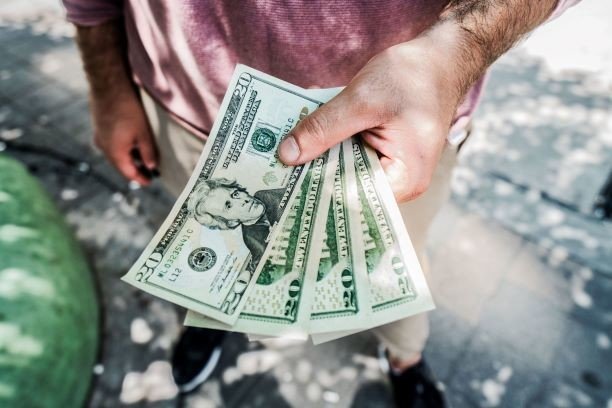3 Ways You Can Start Saving More In 2018
Remember being in high school thinking:
“If I could just get a job that made me $50,000/year I’ll be SET. I’ll move out of my mom’s place and get my own apartment, have a car, go on trips, and life is going to be fun!”?
And then you got a job making that much money, thinking “Finally! This is when the dream comes true”

So you start working and six months go by.
You look at your bank account and all you have to show is a lousy $2,000.
Then you get into a depression about those big dreams you had.
“How could this be? I thought I would be saving a lot more than this!”
So you decide you need to find a new job that pays you more.
Now you’ve got a job that pays you $75,000/year and you start thinking:
“Okay NOW I will definitely be able to start saving a lot. I’ll move out of my mom’s place and get my own apartment, have a car, go on trips, and life is going to be fun!”
And after 6 months of working at this new job, again you find that your bank account has only increased by $2,000.
The realization may start to kick in at this point:
“How is this possible if I’m making MORE MONEY now?”
Well friend, the answer lies within your spending habits.
Yes you are making more.
You are not SAVING more.
Let us show you 3 changes you can make so you don’t get that disappointed feeling after looking at your bank account.
1. Figure Out Your Expenses
You need to create a monthly budget for each area of your life.
You need to find out how much you are CURRENTLY spending in life.
There are two factors to look into when determining your spending habits:
- Fixed Expenses
- Variable Expenses
a. Account For All Your Fixed Expenses
These are the expenses in your life that DON’T change. Hence the name.
For most people, the fixed expenses include things such as:
- Rent or mortgage
- Debt (student loans or otherwise)
- Health Insurance
- Car Insurance
- Smartphone Plan
Now you may not necessarily have ALL of these expenses in particular.
… or you may have ALL of them AND more.
Whatever your case may be, the point is that these are simply expenses that we can’t negotiate on in terms of price once they’re set.
Think wisely before you set yourself up for fixed expenses.
They’re often not easy to reduce/change/remove once acquired.
b. Account For All Your Variable Expenses
Once we have our fixed costs accounted for, we can start developing a budget for our variable expenses.
Variable expenses are expenses which we can CHOOSE how much we pay for each time.
Examples of these kinds of expenses are:
- Food
- Clothing
- Transportation
- Entertainment
- Socializing
- Electronics
The list can go on and on.
The wonderful thing about this type of expense is that we can cut a lot of our total expenses here.
2. Cut Down On Those Expenses
Now that we understand exactly what our current spending habits look like, let’s think of ways to cut back on those expenses.
While we don’t know what your individual situation is like, we do understand that there are several things that humans need to live in a modern day society.
a. Cutting Back On Your Fixed Expenses
Rent/Mortgage
This is one of the most expensive fixed expenses.
How can you cut back on this?
Well...
Live somewhere cheaper and live with roommates.
Live with your parents.
Sleep on someone’s couch.
b. Cutting Back On Your Variable Expenses
3. Pay Yourself First
You can now see a noticeable gap between your take-home pay and your expenses.
This brings us to the final step.
Pay yourself first.
In order to save money, you have to pay yourself don’t you?
What do we mean by this?
Have a savings account. Put money into that account EVERY paycheck.
How else can you expect to see your savings grow if you don’t actually put any money into savings?
Believe us, we’re empathic. We understand we all have expenses that we need to worry about, but we can always find ways to cut some of those expenses out.
There are two different approaches that people take when it comes to savings: Spend-First: Collect your paycheck, use it for the month, and then save whatever is left.
Save-First: Collect your paycheck, put aside your savings, and then spend whatever is left.
The difference is subtle, but ENORMOUS.
In the SAVE-FIRST approach, you are putting money aside first as opposed to saving whatever is left.
This is a MUCH better approach than the first one.
In the SAVE-FIRST approach, you guarantee savings.
In the SPEND-FIRST approach, you can easily end up overspending for the month and have very little (if anything) left for savings.
To take full charge of the save-first approach:
- Set a yearly savings goal based off of your budget.
- Figure out how much you need to save per paycheck.
- Have that money automatically taken out and put in a separate savings account every pay period.
This will help you adjust to living under a new budget.
After time, you will be used to living as if you aren’t even making that extra money.
It’s now going straight into a savings account.
You never see it until months and months later.
Then you’re pleasantly surprised.
Let’s Start Saving
Saving more money might seem like a daunting task at first because it will require you cut down expenses which you may THINK are necessary.
Once you realize that those things AREN’T all that necessary, and that saving is very important for your financial future, then you will be much better off for it.
Take action today and watch the savings start to pile up.
If you haven’t done so already, then soon enough you’ll be able to move out of your mom’s place, get your own apartment, go on trips, and life will get just a bit more fun.
Let me know in the comments which expense you think would be the easiest to cut back on and which would be the hardest.

Congratulations @hunter5! You have completed the following achievement on Steemit and have been rewarded with new badge(s) :
Click on the badge to view your Board of Honor.
If you no longer want to receive notifications, reply to this comment with the word
STOPDo not miss the last post from @steemitboard:
SteemitBoard and the Veterans on Steemit - The First Community Badge.